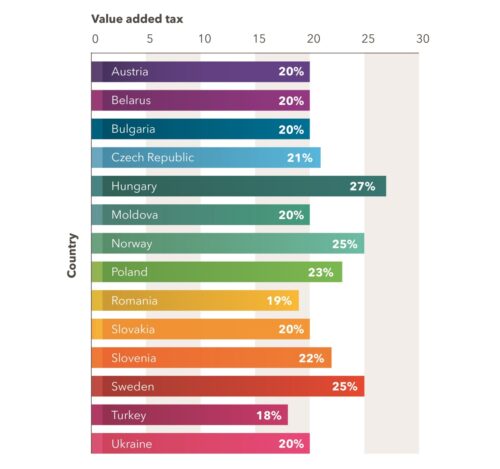For both HR and payroll professionals, recent years have brought about a significant shift in role.
More and more, HR is expected to deliver added value to the business through analytical and transformational work, rather than solely focusing on people administration.
Payroll departments, meanwhile, have seen their responsibilities grow significantly too, largely thanks to legislation like RTI (Real-Time Information) and auto-enrolment.
While some businesses have sought to meet these new-found challenges separately (often outsourcing payroll altogether), more and more organisations now recognise the value in tackling these challenges in parallel, integrating HR and payroll into one single system.
Done correctly, the integration of HR and payroll brings a vast array of benefits – with one single set of data which means fewer duplications, less work, and far less room for error.
It also makes reporting more accessible and insightful, bringing together employee and payroll data to help you accurately relate pay to performance.
The problem is when HR software providers say “Integrated HR and Payroll” they don’t all mean the same thing. And while providers will almost always promise some kind of payroll integration – it will often fail to live up to your expectations.
In this blog post, we’ll identify what truly integrated HR and payroll looks like, and how the right system can help you deliver big benefits to the business as a whole.
Why true HR and payroll integration means a single source of data
Speak to HR software suppliers about their platform and it won’t be long before you hear the word ‘integration’. Vendors know that bringing HR and payroll data together is a key driver for many businesses, and it’s, therefore, becoming a primary selling point for the software.
Make no mistake though, one supplier’s idea of integration can be very different from the next.
While true integration can be defined as the use of one single database, many suppliers simply offer the link-up of two existing systems so that they “talk” to each other – but with data still existing separately in each system.
While this does offer some advantages, it isn’t integration in the truest sense – and it can present some problems.
Firstly, when systems are bolted together in this way, the data typically only flows in one direction. From HR into payroll or vice versa.
This means the data can easily become inconsistent if something were to be manually edited in the ‘receiving end’ of the system.
What’s more, with two separate datasets in existence, even the simplest of formatting issues (for instance £10.00 v £10) can cause significant headaches, putting up a roadblock to accurate reporting.
Perhaps most significantly, bolting systems together leaves the integration open to potential failure. Ultimately, you’re still transferring or syncing data from one system to another – and that’s less reliable than having both systems use the same dataset automatically. This situation is far from ideal, as inaccurate people data can cause all sorts of problems, particularly when it relates to your employees’ pay and benefits.
When you’re in the market for integrated HR and payroll software, it’s important to ask suppliers if their solution is built on a single (‘unitary’) database.
Only the single database approach can guarantee a reduction in administration, and eliminate the pitfalls of duplicate data entry.
The benefits of properly integrated payroll
As well as putting duplicate data entry to an end, single-database HR and payroll systems can bring a raft of benefits for the wider business.
Here are just some of the ways true payroll integration can support your overarching business aims:
1 Improved, insightful reporting
Pooling and analysing your HR and payroll data can be a significant undertaking when you’re operating separate systems – and even when your systems are bolted together, the existence of separate data sets can still make accurate reporting a challenge.
Given the enhanced capabilities of today’s analytics and reporting tools, that’s a real missed opportunity for any business.
With true HR and payroll integration, you’ll always be working with one single version of the truth. A data set you can trust for actionable insights, deliverable in one click.
2 Better employee engagement
When you integrate payroll with an HR system that offers self-service functionality, you take another positive step in delivering an engaging employee experience.
As well as being able to book time off and manage their personal data online, employees will also be able to view their payslip and benefits data at their own convenience.
This gives your employees greater visibility over their pay records and more understanding of their benefits entitlement. It also becomes easier to spot and solve inaccuracies.
This shouldn’t be underestimated, given the clear correlation between efficient, accurate payroll and continued employee satisfaction.
3 Reduced exposure to compliance issues
Maintaining compliance with fast-evolving employment legislation is arguably one of HR’s greatest modern-day challenges. From tax issues to working time regulations, there’s no shortage of red tape to wrap you up – but having all your data in one place can help you keep you compliant with the latest employee legislation.
Single database systems can also help you keep your house in order from a GDPR (General Data Protection Regulation) perspective too. Responding to a request for data removal, for instance, becomes easier when you know you only have to delete it from one single system.
Summary
As HR and payroll gradually intertwine to play a larger, more strategic role in the business, pooling the departments’ data resources makes a logical and sensible step.
Unless you’re operating a heavily embedded HR system that you simply can’t move away from, firms should now be seeking as much integration between HR and payroll as possible.
Remember though, every software supplier has its own definition of unified data. Only single-database solutions can deliver the ‘holy grail’ of true integration.
This article was curated from naturalhr.com
Featured Image Credit: Photo by Jonathan Borba from Pexels








